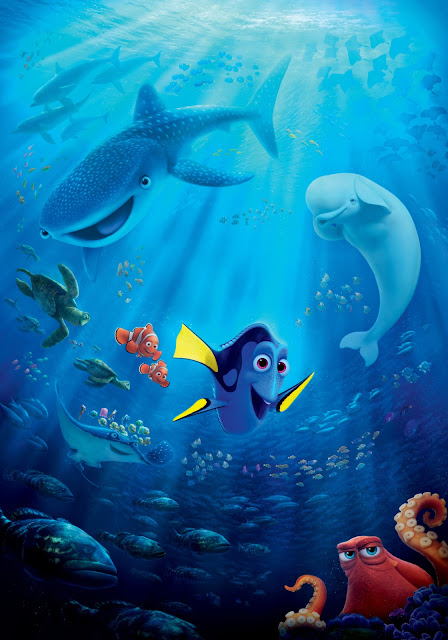 |
| Photo from movies.disney.com.au |
Warning: spoiler alert!
Disney-Pixar's sequel to 2003's Finding Nemo, is quite a treat for people of all ages who dearly love the ocean, and after watching this movie, those who don't, will soon do. Finding Dory showcases the beauty of the marine environment, from the towering kelps and serene seagrasses, the myriad of majestic corals, cryptic crabs and worms, a fast jetting squid and an agile octopus, to sunbathing Californian sea lions, hard-to-resist sea otters, thunderous spotted eagle rays, an adventurous common loon and green sea turtles. As if these marine creatures aren’t fantastic enough, the film delivers an incredibly funny, very poignant story that will tug at everyone’s hearts.
The Pacific regal blue tang, Dory, charmed the audience, chunks of humor aside and her whale-talking-prowess, with
a genuine portrayal of what it is like to have an anterograde amnesia, of its
limits and quite surprisingly, the strength that it brings forth. We can learn
a lot from Dory by looking at the brighter side and asking ourselves the question: “What would Dory do?” instead of saying: “Don’t be such a Dory!”.
Who wouldn’t be in awe with Hank the
east Pacific red octopus as he skillfully turns to a house plant, and moments
later to a baby feeding on his bottle? Octopuses are probably the most intelligent sea
creatures, utilizing every imaginable human litter on the ocean floor to blend
in, and yes, even break out from captivity.
Hank was the epitome of such cleverness. More importantly, with Hank
getting into trouble inch by inch with Dory, who can match such loyalty?
Indeed, when you ask for help, the world conspires in helping you achieve it.
Destiny, the whale shark, although
near-sighted and bumps her head all the time, was able to rise above her
insecurity (literally and figuratively) and help her pipepal Dory as she
launches a rescue operation. Her friend beluga, Bailey was
able to regain his ability to echolocate - a ton of help, not to mention super
fun - as he and Destiny helped Dory find her way through the pipes. What Dory
said was true: “Best things happen by chance.” She happens to have a pipepal
who also happens to have the coolest partner. And of course, the world is a better
place with people living to their potential and helping each other out.
Our old friends, the orange clownfish Nemo and
his father Marlin, resonate a story so familiar – of being lost and then
reunited. Marlin knew very well how empty it felt to have lost Nemo and didn't want to go through it all again, that’s why
he was hesitant to help Dory, but he was reminded that it was
because of Dory and her sometimes thoughtless acts, that helped both Nemo and Marlin muster courage when they needed it most. Sometimes fear can paralyze us, but Dory and many of the characters prove otherwise, and that we won't realize what we’re capable of until we try. So let’s battle against the tempest and just keep swimming!
Join us in the next few weeks as we get to know more about the amazing animals we've met in this story.
Join us in the next few weeks as we get to know more about the amazing animals we've met in this story.









